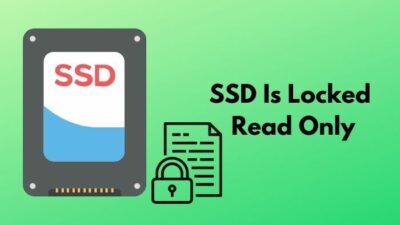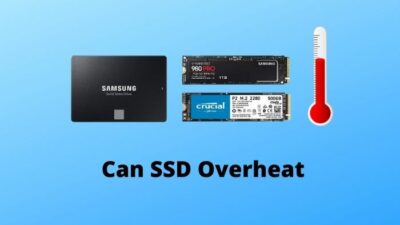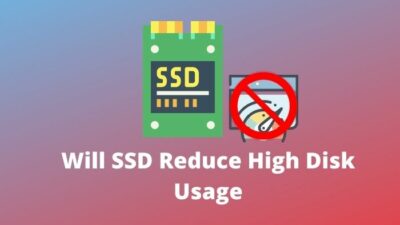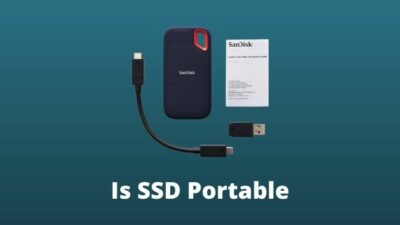Modern computers are consistently beating the drum for SSDs, which makes HDD feel like an object of the ancient world. But it is?
On the surface, comparing an SSD with an HDD may appear to be correlating Apples with Oranges, even though they are vastly different under the hood.
Not to worry, though, in this article, I’m going to enlighten you about the disparities between SSDs and HDDs.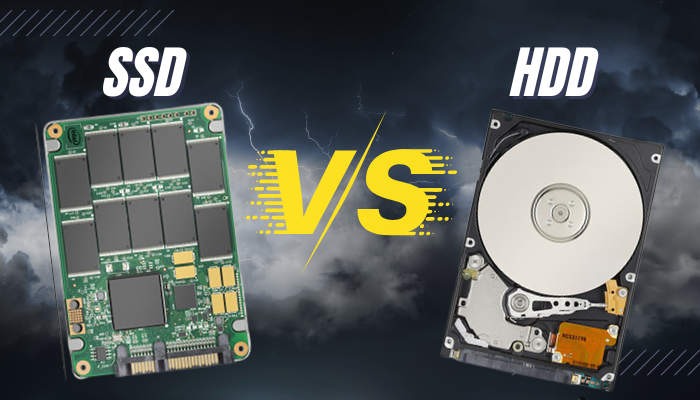
Let’s begin, shall we?
SSD and HDD: What Are They?
Solid State Drive — it’s the very non-volatile storage device that you know today as an SSD. It holds data on flash memories (NAND) — an incredible technology to circumvent the need for a traditional mechanical hard drive.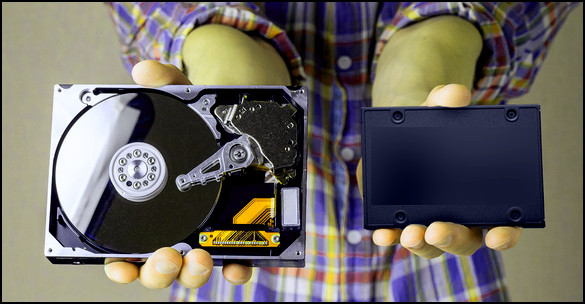
Hard drives, on the other hand, store information on rotating disks called platters with the help of a read-and-write head (Actuator Arm).
Due to all the mechanical parts, hard drives are chunkier and heavier than an SSD of any form. The lack of moving parts and the need to go through all the data sectors to insert or fetch a piece of information makes an SSD a hell of a lot faster.
Navigating through the operating system, loading apps and games, and other functionalities involving the storage disk happens in a flash on an SSD in contrast to an HDD. When it comes to capacity, however, hard drives still prevail.
Doesn’t really paint the whole picture, does it? Well, in the later section, I’ll cover every aspect of an HDD and SSD in vivid detail.
SSD or HDD: Does it Make A Difference?
Modern games, as well as productivity applications, demand a user to have any sort of solid-state drive installed on the system. Developers have more freedom than ever with newer generation components to take advantage of and accommodate a splendid user experience.
Doesn’t that make HDD more of a showpiece?
Well, below, I’ve discussed the difference between an SSD and HDD in great detail.
Concept of Operation
Solid State Drive (SSD)
See, an SSD comprises memory cells, also known as Charge Trap Flash. These cells can hold 3 bits of data, trapping different levels of electrons. Once the electrons are confined, they stay as is for many years until any data is forcefully erased.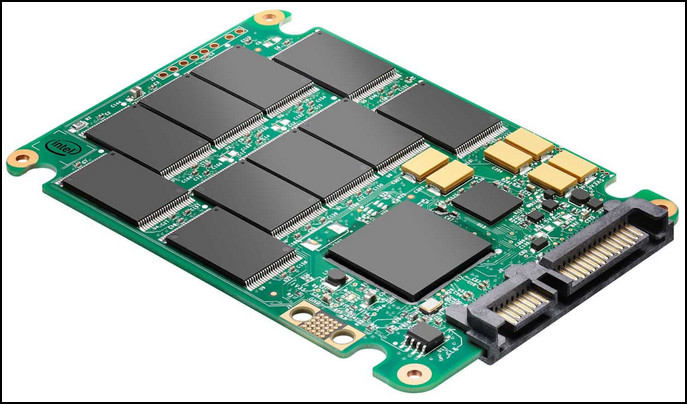
These memory cells are arranged in a grid layout that contains thousands of rows and columns, more like a 3D Excel spreadsheet, where the value can only go from 0 to 7. Such spreadsheets are stacked on top of one another depending on the capacity of the SSD.
To determine where to read and write data on the chip, Control Gate Selectors are used for columns, and Bitline Selectors are used for rows. This allows rapid access to the pinpoint data location directly, which immaculately increases the read and write speed compared to a traditional hard drive.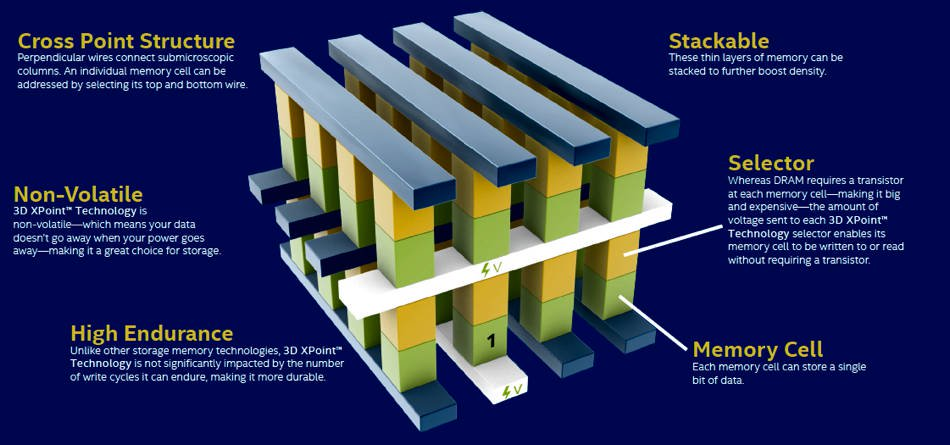
Hard Drive Disk (HDD)
Coming back to the operation of an HDD, it’s completely different from the SSD. The main disk or platter inside a hard drive is made of Aluminium-Magnesium alloy. But the effective magnetic layer is made of 120nm thin Cobalt Chromium Tantalum Alloy. And this surface holds small magnetic regions whose orientation can be changed by a foreign magnetic field to store or remove data.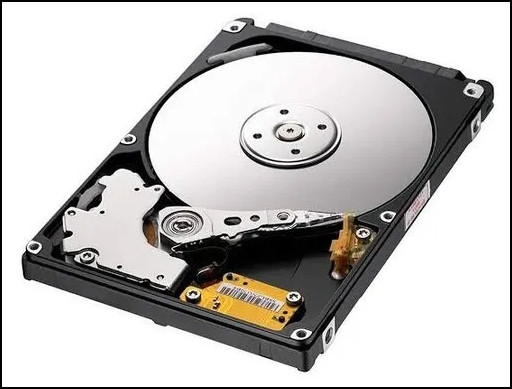
Speaking of the disk, it’s divided into homocentric (multiple circles having a single center) circular trails. Modern pallets have more than 500,000 tracks on a single side. These tracks are then carved up into an overwhelming number of sections. Each section can hold 4KB of data. Also, these sectors have individual addresses to identify the data location.
So, when the disk spins ridiculously fast, such as 7200 revolutions per minute (RPM), the read and write head on the actuator arm stores or fetches data on these sectors. And this is achieved by changing the direction of the magnetic domains I mentioned earlier.
Now, I know all of this information might sound too technical for many people, especially those who care about the strengths and benefits of both types of storage drives.
But before that, to summarize in plain and simple words, storing or retrieving a piece of information on an HDD requires the disk to spin, and the write head follows the circular trails on it. When it finds an empty or occupied sector, it either starts to write or read data.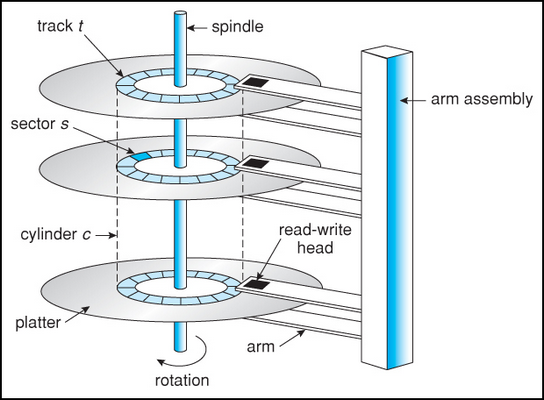
It’s more like a Sprint Athlete who needs to put or collect a marker cone every 50 meters on the racetrack. But to do that, he always has to start from the same point. If a cone is 500 meters away, he has to go all the way and collect it.
SSDs, on the contrary, use smart algorithms and directly navigate to the blank memory cell on the grid or spreadsheet, thanks to row and column numbers, and write or read data immediately. That’s comparable to calling the ID in a class to find a student.
So, unlike the HDD, no need to spend time going through data on a trail and seeking information. And this has a direct impact on the speed of each type of drive.
Speed
By now, you can already guess where the balance is leaning in terms of speed. SSDs are extremely fast, which is 5 to 8 times more than a mechanical HDD operating via the same SATA III interface.
Let’s catch a glimpse at some comparative SSD and HDD read-and-write speed numbers real quick:
| Testing Parameters | SSD (SATA 600/III) | HDD (5400RPM) | ||
|---|---|---|---|---|
| Sequential Query (SEQ1M) | Read (MB/s) | Write (MB/s) | Read (MB/s) | Write (MB/s) |
| Q8T1 - Query depth 8 with one process thread involved | 539.80 | 413.41 | 94.80 | 92.64 |
| Q1T1 - Query depth 1 with one process thread involved | 513.02 | 329.88 | 93.91 | 93.79 |
| Random Query (RND4K) | ||||
| Q32T1 - Query depth 32 with one process thread involved | 256.28 | 207.37 | 1.23 | 0.77 |
| Q1T1 - Query depth 1 with one process thread involved | 45.95 | 97.70 | 0.46 | 0.79 |
Looking closely at the read and write speed, SSDs are a million miles ahead of an HDD both in Sequential and Random data queries.
That said, one thing that stands out, and you should notice carefully, is the Random Query numbers. Our 5400RPM hard drive jumps through hoops yet comes out being more than 200X slower than the SSD. That’s an astronomical improvement, right?
But does it matter in real life? Yes, in every possible way. Let me explain.
Sequential query implies how fast your HDD or SSD can fetch or write data in an orderly fashion, such as 1,2,3. Random Query, however, means how fast your drive can retrieve data instantly from anywhere on the disk. And this is where the SSD makes all the difference.
An SSD parts the way by a million miles from opening a media file, application, or game or navigating through the OS compared to a magnetic rotating hard drive.
To cover all the bases, let’s look at some real-world SSD and HDD speed comparisons:
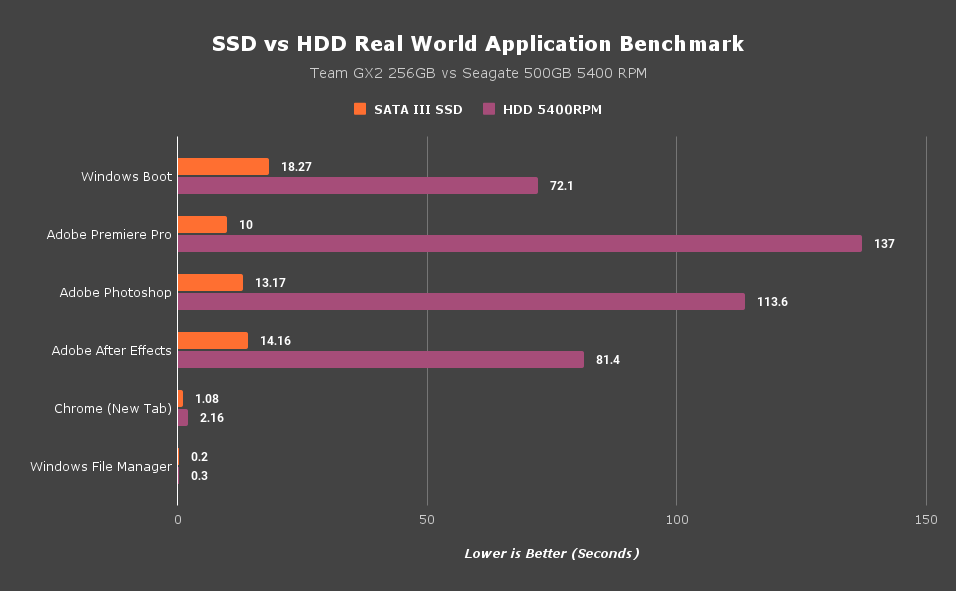 Important to note that an SSD can chug when its memory cells are full.
Important to note that an SSD can chug when its memory cells are full.
Capacity & Cost
You know, when it comes to storage capacity, HDD always comes out on top. The reason?
Well, as the magnetic drives being around for so long, the manufacturing and material cost is significantly lower. It’s inevitable for any technology. With time, it gets cheaper.
Solid state drives, on the other hand, exploit much more complex engineering and manufacturing processes. Technologies like SLC, QLC, and TLC are significantly expensive to implement, though they are reasonably priced compared to the early days.
Condensing everything, the price for 1GB of space on an HDD is way more economical than on SSD. For example, you can buy a terabyte of space on a hard drive at $25-30, whereas a solid-state drive will set you back at least $90-100. That turns the SSD an expensive choice.
Coming back to the storage space, SSD is mostly used as a boot drive or a scratch disk where you read data more frequently. Hence, the entire experience turns out to be fluent and spontaneous. As a result, 256GB and 512GB variants are among the most popular ones. But you can go for as high as 4TB on a consumer-grade SSD.
On the other side of the coin, HDDs are perfect for storing mass data or a backup drive for all your media, games, or any type of files. Not to mention, it’s the perfect fit for NAS (Network Attached Storage) drives, which act as data servers. For this reason, you’ll find hard drives with a capacity as high as 100TB.
Lifespan
Interestingly, SSDs are prone to wear faster than a standard mechanical hard drive when data is written. Based on different manufacturers, such durability is rated in DWPD (Drive Writes Per Day) or TBW (Terabytes Written). An SSD can write so many times on a flash memory cell by trapping electrons, hence such endurance ratings.
For instance, 2 DWPD means you can write the entire memory of an SSD 2 times a day for 3 or 5 years (depending on the manufacturer’s warranty) without any data and speed loss.
When it comes to hard drives, the write head stores new data, but it lasts significantly longer than an SSD. One of my personal 320GB 5400RPM SSD from Samsung is still going strong after 11 years of service with 95% health.
Sounds ridiculous and out of the question if you consider an SSD in its place, isn’t it? But that doesn’t mean HDDs are everlasting. They also degrade with constant usage over time.
On a different note, in a vibration, movement, or shock-enduring environment, SSD will hold on strong. Why?
Because it has no moving parts and no possibility of breaking physical discs. SSDs are typically 25 times more shock absorbent than HDDs.
That said, both SSD and HDD can be damaged due to unexpected power failure. Which eventually can turn out to be a chaotic data loss.
Interface & Form Factor
The shape or dimension of the HDD and SSD cross swords, just the like their difference in speed. More importantly, the form factor and operating interface have a direct impact on how all kind of drive performs.
While HDDs can be found in 3.5-inch or 2.5-inch (screw-to-screw distance horizontally) variants, SSDs go a step further with the newer M.2 form factor. But length-wise, they can be different such as 80mm, 40mm, 30mm, etc.
That’s only half the story; the working interface is another big fat contributing factor exerting the performance of each type of storage drive.
See, HDDs and standard 2.5-inch SSDs work through the SATA interface, and we are now on the third iteration of this technology, providing an effective bandwidth of 6 Gbps.
However, modern M.2 NVMe SSDs embraced the PCIe interface to directly communicate with the CPU and transfer data ranging from 5X to 15X faster than the SATA III. With every new generation of PCIe, these SSDs get even quicker.
Here’s a quick look at SSD & HDD form factors and interface:
| Interface | Form Factor | HDD | SSD | Max R & W Speed |
|---|---|---|---|---|
| SATA III | 3.5 & 2.5-inch | Yes | Yes | 600 MBps |
| SATA III | M.2 | No | Yes | 600 MBps |
| PCIe (NVMe) | M.2 | No | Yes | 3500 MBps (Gen3), 7000MBps +/- (Gen4), 14,000 (Gen5) |
Noise Power & Weight
It’s obvious that with all the mechanical parts such as spinning disk stack, actuator arm, PCB, the HDD draws more power, weighs more and makes significantly higher DB noise. In reverse, SSD is minimalistic, much lighter, power efficient, and makes zero noise.
See, it requires additional power to wake the mechanical drive up and get the read head to the data sector. Which also contributes to the well-known delay in reading data on the HDD.
On the SSD, however, you will get to the exact data cell right away, utilizing minimal power.
| SSD | Factors | HDD |
|---|---|---|
| Faster | Speed | Slower |
| Inside the Flash Cells | Data Storing Mechanism | On the Rotating Disks |
| Lower | Capacity | Higher |
| Shorter | Lifespan | Longer |
| Higher | Shock Resistance | Lower |
| Higher | Price | Lower |
| 0.1 ms | Access Time | 5.5- 8.0 ms |
| Lower | Noise Level | Higher |
| 2 to 5 Watts | Operating Power | 6 to 15 Watts |
SSDs Are Fast! Why Do HDDs Exist, Then?
Yes, SSD is a faster, more compact, and an efficient solution in contrast to a hard disk drive. So, this old-school HDD should’ve been obsolete, right? But why does it still hang around? And why are people still buying them?
You see, no wonder that an SSD is much better in everything and catching up the hard drives in terms of capacity, but an HDD still remains the primary cost-effective storage solution for big data centers, servers, and personal backup media. Also, the absence of higher capacity storage of the SSD makes the HDD an auto choice.
As you can write data in a limited cycle on the SSD, HDD still leads the way to become store and remove bulk data.
So, what about the caveats?
Well, by now, you surely have a clear understanding of the drawbacks of using an HDD. But there’s one that I must utter once again 一 reliability.
You know, if you accidentally drop or hit a mechanical hard drive, it may skip some trail and not read or write data properly.
The result? Your precious data loss! So, handle hard drives carefully to steer clear of such hustle and bustle.
SSD or HDD: Which One to Buy?
To be blunt, for every computer out there, an SSD is a way to go for the boot drive. It will deliver a rich, fast, and smooth experience. Not to mention, modern programs and games rely on and are meant to run on a solid-state drive. Also, for some creators, SSD is the only feasible solution to move data back and forth.
With that being said, for engineering data backups or saving heaps of multimedia data for future use, an HDD will not only give you enough capacity but will save a fair amount of money.
So, figure out what your use case is and choose according to your budget. If you ask my opinion, I would highly recommend an SSD to install the operating system, nevertheless. If you upgrade, simply move your games or applications from the existing HDD to the SSD.
Ending Remarks
A debate on whether to buy an SSD or HDD is long gone. It’s now more about which one is perfect to serve your purpose. And truthfully, both hold their value in their own way. After going through this article, I’m confident that you are now well aware of the differences between an SSD and HDD.
Adios!

